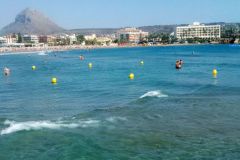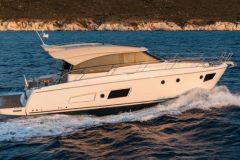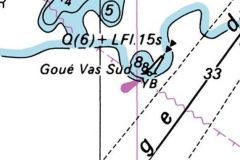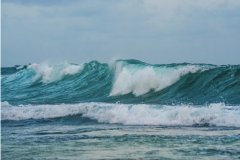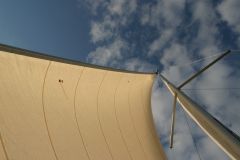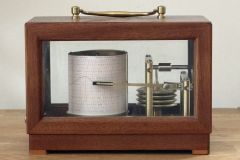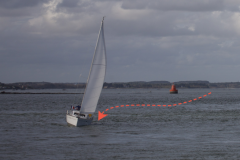Each week, Bateaux.com offers you a question on the boating licence . You can thus complete your knowledge or increase your skills on the very broad field of boating. This week, we will focus on coastal meteorology and the notion of thermal breeze. It is a local effect linked to the warming of the earth during the day and its cooling during the night. The thermal breeze reinforces (or sometimes diminishes depending on the direction) the wind of lows and highs.
What is the sea breeze?
The sea breeze is created during the day as the sun warms the coastal strip.
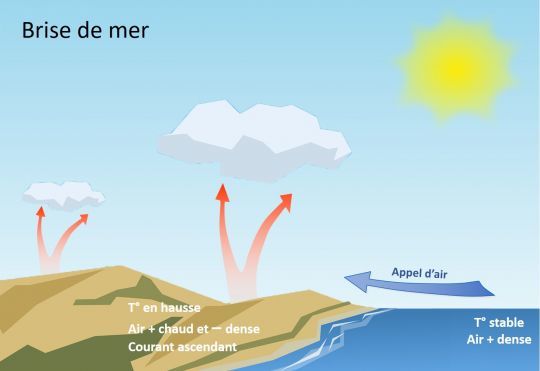
When the sun begins to warm the coast (fields, roads, houses, etc..), the air in the vicinity also warms up and becomes less dense.
On the other hand, the sea has a significant thermal inertia. The process is very slow: the water mass takes several days or even several weeks to warm up by a few degrees. We can therefore consider that on a daily basis, the temperature of the sea will remain stable: the air above the water will maintain its temperature and density.
At the end of the morning, the warming starts to intensify. The air on the coastal strip will become much less dense than the one present on the sea and it will organize ascending currents of warm air often covered by small cumulus. The establishment of small cumulus clouds on the coast is often a precursor of the sea breeze.
This less dense air and these upward currents on the coast will create a "deficit" of air molecules which will be filled by the denser air located on the sea: a current of air or "draft" will thus cause a wind coming from the sea towards the coast called "sea breeze".
Depending on the extent of the warming of the land compared to that of the sea, the sea breeze can sometimes be quite strong and reach force 5 or even 6 at the height of the day. It acts on a few miles towards the sea and on a few kilometers towards the interior of the lands.
What is the earth breeze?
Unlike the sea breeze, the land breeze develops during the night as the coastal strip cools at night and reaches its maximum just after sunrise.
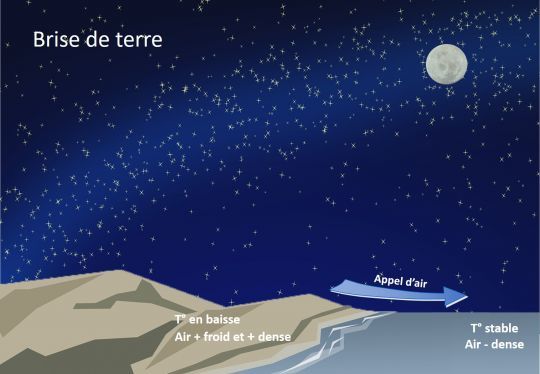
Over the coastal strip, as the evening and night progresses, the air over land also cools, becoming increasingly dense.
The temperature of the sea, with its very important thermal inertia, will remain stable. The air located near the sea will keep its temperature and its density (the latter becoming less dense than the air cooled on the land).
This difference in density will cause a "draft" from the land to the sea called "Land Breeze".
The onshore breeze effect is at its peak at sunrise, then gradually diminishes in the morning as the sun warms the coast.
Impact of thermal breeze effects on marine weather and navigation
The sea breeze and/or the land breeze can reinforce or diminish the effects of the gradient wind (i.e. the wind generated by the highs and lows).
If a "breeze effect" is announced in a weather report, it is important to know what impact it may have on your navigation or anchorage.
When the gradient wind (the one generated by the highs and lows) comes from the land: the thermal breeze effect will reinforce the wind during the night and in the early morning, on the other hand, it will attenuate or even cancel and sometimes reverse the wind in the afternoon.
When the gradient wind comes from the sea, it will be the other way around: the breeze effect will attenuate, cancel and sometimes reverse the wind in the late night and early morning, but it will reinforce the wind from the sea to the land in the afternoon. This is the case for our question of the day. The correct answer is B.




